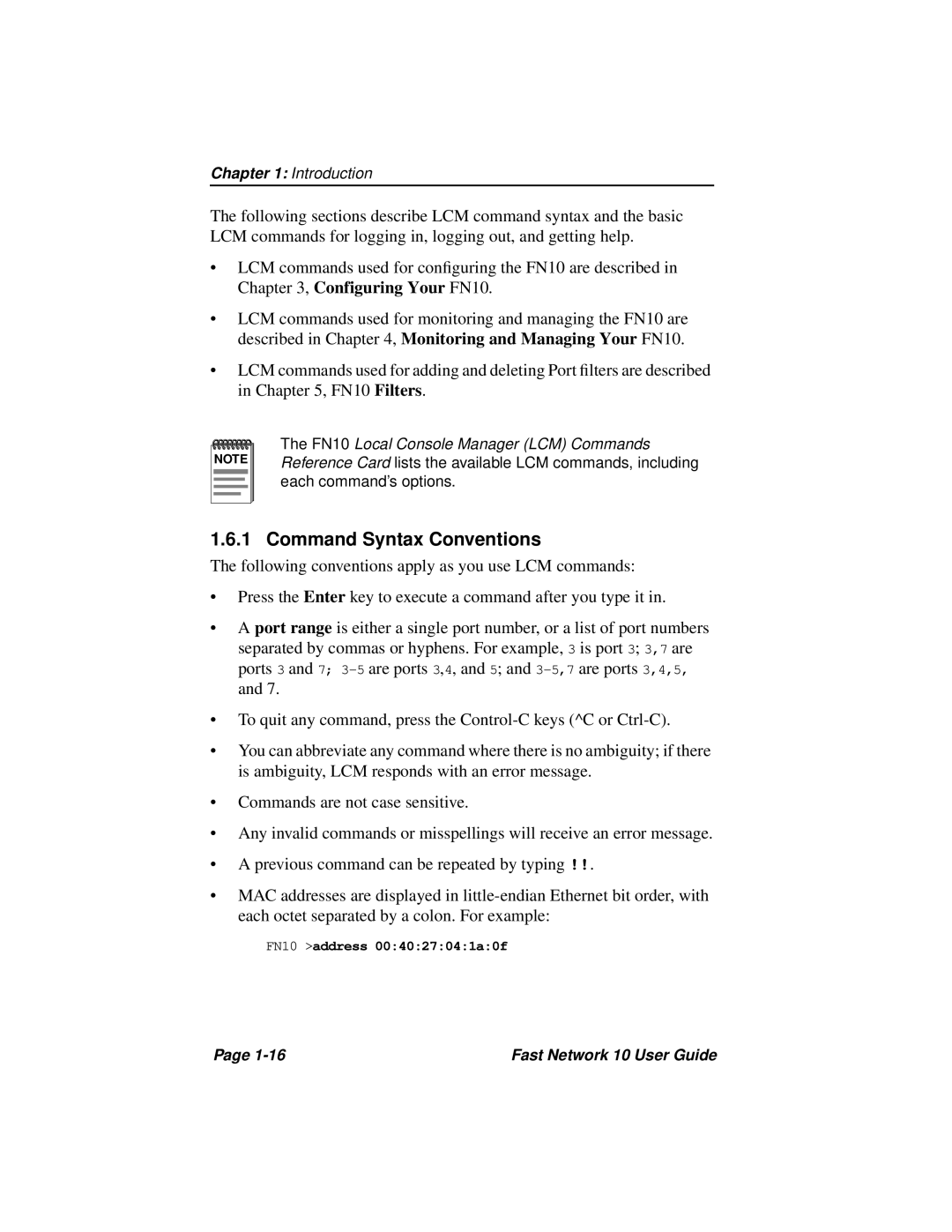
Chapter 1: Introduction
The following sections describe LCM command syntax and the basic LCM commands for logging in, logging out, and getting help.
•LCM commands used for configuring the FN10 are described in Chapter 3, Configuring Your FN10.
•LCM commands used for monitoring and managing the FN10 are described in Chapter 4, Monitoring and Managing Your FN10.
•LCM commands used for adding and deleting Port filters are described in Chapter 5, FN10 Filters.
NOTE |
The FN10 Local Console Manager (LCM) Commands Reference Card lists the available LCM commands, including each command’s options.
1.6.1 Command Syntax Conventions
The following conventions apply as you use LCM commands:
•Press the Enter key to execute a command after you type it in.
•A port range is either a single port number, or a list of port numbers separated by commas or hyphens. For example, 3 is port 3; 3,7 are ports 3 and 7;
•To quit any command, press the
•You can abbreviate any command where there is no ambiguity; if there is ambiguity, LCM responds with an error message.
•Commands are not case sensitive.
•Any invalid commands or misspellings will receive an error message.
•A previous command can be repeated by typing !!.
•MAC addresses are displayed in
FN10 >address 00:40:27:04:1a:0f
Page | Fast Network 10 User Guide |
